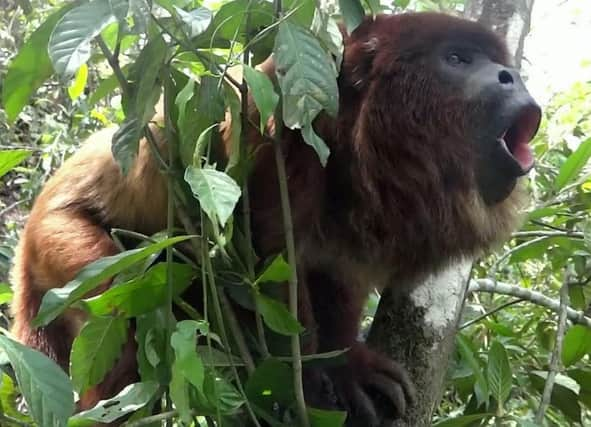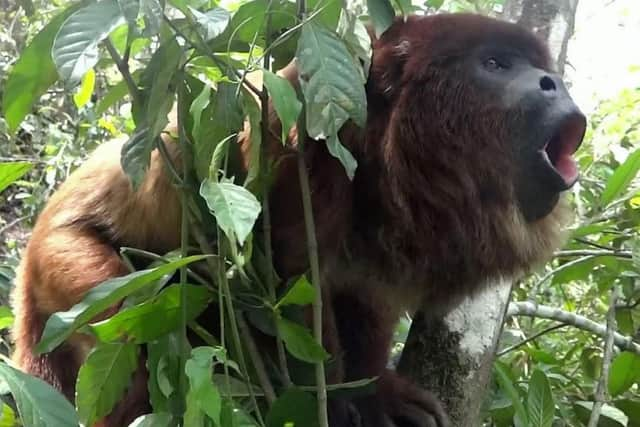VIDEO: Monkeys with the biggest roar - have the smallest testicles say scientists


Howler monkeys may be one of the loudest animals on the planet but their vocals skills might all be for show as scientists found the louder their call, the lower their sperm count.
Evolution has given these small animals a powerful vocal system.
Advertisement
Hide AdAdvertisement
Hide AdFor males, a key function of the roar is to attract females and scare off rivals.


But not all male howler monkeys have been equally endowed, as new research has revealed an evolutionary trade-off between the hyoid – the arched throat bone that allows the roar to resonate – and the testes.
The deeper and louder the roar, the smaller a monkey’s testicles and the less sperm they produce.
Researchers from Cambridge University found that the trade-off also corresponded to how the different species of howlers lived.
Advertisement
Hide AdAdvertisement
Hide AdMales with large hyoids and deeper roars, but small testicles, live in small social group and are the only male in a group of females.
Males with smaller hyoids and bigger testes live in bigger groups with up to six males. Females in these groups mate with all the males in the group.
This means that there is more competition for males, so they have evolved to produce more sperm than their counterparts who have free reign over a group of females.
The findings, published in the Current Biology journal suggested were an example of Charles Darwin’s theory of sexual selection.
Advertisement
Hide AdAdvertisement
Hide AdLecturer Dr Jacob Dunn, from the university’s Division of Biological Anthropology said: “In evolutionary terms, all males strive to have as many offspring as they can, but when it comes to reproduction you can’t have everything.
“There is evidence in other animals that when males invest in large bodies, bright colours, or weaponry such as horns or long canines, they are unable to also invest in reproductive traits.
“However, this is the first evidence in any species for a trade-off between vocal investment and sperm production.”
Trade-offs in biology likely exist when one trait cannot increase without a decrease in another.
Advertisement
Hide AdAdvertisement
Hide AdHowever Dr Dunn said it was not yet clear exactly how the evolutionary trade-off in male howler monkeys works and added: “It may be that investment in developing a large vocal organ and roaring is so costly that there is simply not enough energy left to invest in testes.
“Alternatively, using a large vocal organ for roaring may be so effective at deterring rival males that there is no need to invest in large testes.”
Along with collecting data on the average testes size across howler species, the researchers also used 3-D laser scans to analyse the size of over 250 hyoids - finding a ten-fold variation from the smallest to the largest howler throat bone.
The team also conducted in-depth acoustic analyses of a number of howler roars.
Advertisement
Hide AdAdvertisement
Hide AdHe said: “The vocal folds of a howler monkey are three times longer than a human’s, yet they are ten times smaller than us, with a hyoid bone uniquely adapted to resonate sound and exaggerate their size.
“The results of our acoustic analyses show that howler monkeys produce roars at a similar frequency as tigers, which is far lower than we would have predicted from their body size, yet exactly what would be predicted from measuring their giant vocal folds.”
Being able to roar loudly means howlers can give the impression of being a much larger animal. Their howl can carry as far as five kilometres through dense rainforest.